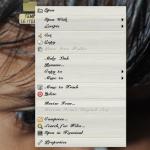nautilis fork ( File manager ) with tree view in sidebar.
Was searching for this for sometime now, finally found it.
sudo yum install nemo sudo yum list nemo*
First just install nemo. Configure nemo not to interfere with default desktop and also make it default handler. So, here are the settings that would do it.
gconftool-2 --set /desktop/gnome/applications/component_viewer/exec --type 'string' 'nemo "%s"' gconftool-2 --set /desktop/gnome/url-handlers/trash/command --type 'string' 'nemo "%s"' gsettings set org.nemo.desktop show-desktop-icons false
Now, if you need more functionality in file manager then check the list of nemo packages from the output of second command of yum. It has plugins like file preview and so on. Install and enjoy.
Continue reading ][1]
][1] ][2]
][2]